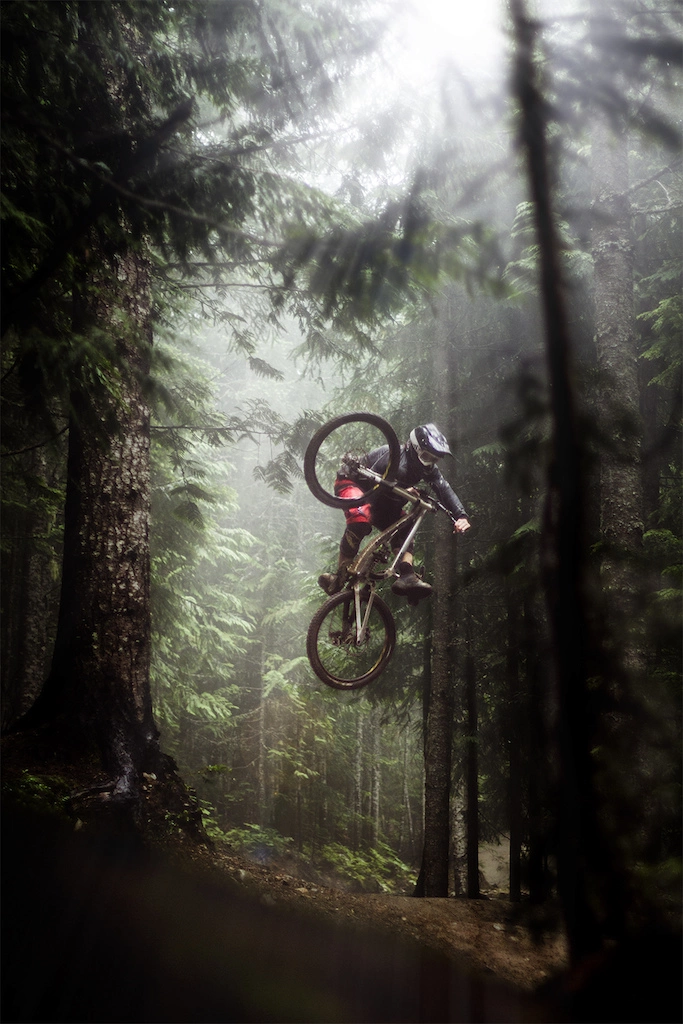
Riding in the Rain: MTB PSI for Wet Conditions
Mountain biking in the rain can present its own set of challenges, especially when it comes to tire pressure. The right tire pressure can mean the difference between a safe and enjoyable ride. Or on the other hand a frustrating and potentially dangerous ride. In this blog post, we will explore how to adjust your MTB PSI. Especially we will focus on wet conditions to ensure maximum performance and safety.
Understanding the effects of MTB PSI for wet conditions
First, it’s important to understand that tire pressure plays a critical role in the handling and performance of your bike. The MTB PSI in your tires affects the bike’s handling, traction, and overall performance. In dry conditions, a higher tire pressure can provide a faster and smoother ride, as well as better puncture resistance. However, in wet conditions, lower tire pressure is recommended for improved traction and control.
Riding in the rain
When it comes to riding in the rain, the key is to lower your MTB PSI tire pressure slightly. Lowering the pressure in your tires increases the contact patch, which improves traction and stability on wet surfaces. This is especially important on slippery rocks, roots, and mud. By reducing the pressure, the tire will have a larger footprint. This will help distribute the rider’s weight more evenly and increase the surface area of the tire in contact with the ground.
It’s important to note that the recommended tire pressure for wet conditions will vary depending on the type of terrain and riding conditions. For example, if you’re riding on rocky or technical terrain, you may want to lower the pressure even more. This will help to increase traction and control. On the other hand, if you’re riding on smooth trails, you may want to inflate the tires slightly more. This helps you to improve speed and efficiency.
But keep in mind, do not make the tire pressure to low. A very low tire pressure can decrease your ability to steer your mountain bike. Moreover the danger to damage your rims on big impacts increases as well as to have punctures.
Type of tire is important as well
It’s also important to consider the type of tire you’re using. Different types of tires will have different recommended pressures for wet conditions. For example, tires with large knobs and aggressive tread patterns will typically require lower pressure. Tires with smaller knobs and less aggressive tread patterns require usually higher pressure.
What to watch out for when riding in the rain
In addition to adjusting your MTB PSI tire pressure, there are a few other things to keep in mind when riding in the rain. For example, it’s important to slow down and take corners more carefully to avoid slipping and sliding. It’s also a good idea to use a tire with a more aggressive tread pattern, as this will help provide better traction on wet surfaces.
In conclusion, adjusting your tire pressure for wet conditions is crucial for a safe and enjoyable mountain biking experience. Lowering the MTB PSI pressure in your tires can improve traction and stability on wet surfaces and increase the surface area of the tire in contact with the ground. This is especially important on rocky and technical terrain. It’s also important to consider the type of tire you’re using and the terrain and riding conditions. Remember to slow down, take corners more carefully, and use a tire with a more aggressive tread pattern. With the right tire pressure and a little extra caution, you can safely and confidently tackle the trails in any weather condition.
Do not forget to download SAGLY. With the mobile app SAGLY you can document, tune and compare your mountain bike settings. The built in tire pressure calculator helps you to find the right tire pressure with ease. This feature calculates based on your body weight as well as terrain preference and tire model the right tire pressure for you in seconds.
Download SAGLY, a complete mobile guide, which helps you set up your MTB settings and maintain your bike.

